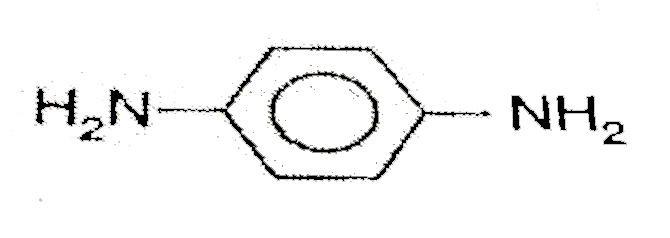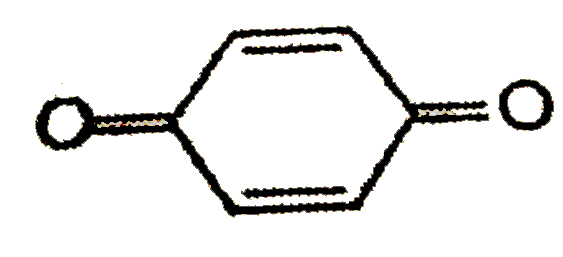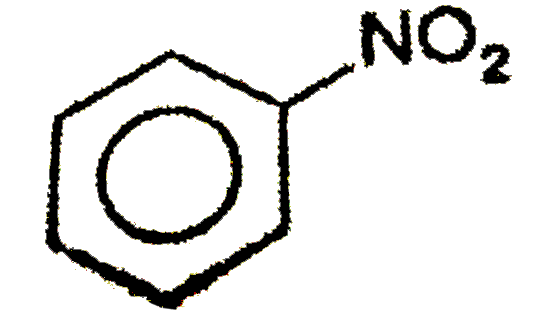Write the product when D-glucose reacts with conc. HNO3
To determine the product formed when D-glucose reacts with concentrated nitric acid (HNO3), we can follow these steps:
1. Identify D-Glucose Structure:
D-Glucose is a six-carbon aldose sugar with the molecular formula C6H12O6. Its structure can be represented as:
HOCH2(CHOH)4CHO
2. Understand the Reaction:
Concentrated nitric acid (HNO3) is a strong oxidizing agent. When D-glucose reacts with HNO3, it undergoes oxidation.
3. Oxidation of D-Glucose:
In the presence of concentrated HNO3, the aldehyde group (-CHO) at the first carbon and the primary alcohol group (-CH2OH) at the sixth carbon of D-glucose are oxidized to carboxylic acid groups (-COOH).
4. Formation of Glucaric Acid:
The oxidation of both the aldehyde and the primary alcohol groups leads to the formation of glucaric acid (also known as saccharic acid). The structure of glucaric acid can be represented as:
HOOC-CHOH-CHOH-CHOH-CHOH-COOH
5. Final Product:
Therefore, the product formed when D-glucose reacts with concentrated HNO3 is glucaric acid (C6H10O8).
Final Answer:
The product formed when D-glucose reacts with concentrated HNO3 is glucaric acid (C6H10O8).
---
D-Glucose is a six-carbon aldose sugar with the molecular formula C6H12O6. Its structure can be represented as:
HOCH2(CHOH)4CHO
Concentrated nitric acid (HNO3) is a strong oxidizing agent. When D-glucose reacts with HNO3, it undergoes oxidation.
In the presence of concentrated HNO3, the aldehyde group (-CHO) at the first carbon and the primary alcohol group (-CH2OH) at the sixth carbon of D-glucose are oxidized to carboxylic acid groups (-COOH).
The oxidation of both the aldehyde and the primary alcohol groups leads to the formation of glucaric acid (also known as saccharic acid). The structure of glucaric acid can be represented as:
HOOC-CHOH-CHOH-CHOH-CHOH-COOH
Therefore, the product formed when D-glucose reacts with concentrated HNO3 is glucaric acid (C6H10O8).
The product formed when D-glucose reacts with concentrated HNO3 is glucaric acid (C6H10O8).
Topper's Solved these Questions
- BOOK - MODERN PUBLICATIONCHAPTER - BIOMOLECULESEXERCISE - Conceptual Questions (2)37videos
BIOMOLECULES
- BOOK - MODERN PUBLICATIONCHAPTER - BIOMOLECULESEXERCISE - NCERT FILE (NCERT)(In - text Question)8videos
BIOMOLECULES
- BOOK - MODERN PUBLICATIONCHAPTER - BIOMOLECULESEXERCISE - UNIT PRACTICE TEST FOR BOARD EXAMINATION13videos
BIOMOLECULES
- BOOK - MODERN PUBLICATIONCHAPTER - ALDEHYDES ,KETONES AND CARBOXYLIC ACIDSEXERCISE - UNIT PRACTICE TEST13videos
ALDEHYDES ,KETONES AND CARBOXYLIC ACIDS
- BOOK - MODERN PUBLICATIONCHAPTER - CHEMISTRY IN EVERYDAY LIFE EXERCISE - UNIT PRACTICE TEST13videos
CHEMISTRY IN EVERYDAY LIFE
Similar Questions
Knowledge Check
- Question 1 - Select One
Glucose reacts with HNO3 to form
AGluconicBSaccharicCSulphuricDGlyconic - Question 2 - Select One
Aniline reacts with conc. HNO3 to give
A B
B C
C D
D
- Question 3 - Select One
The product when Sn reacts with conc HNO3 is:
ASnOBSn(OH)2CH2SnO3DSn(NO3)4
Name the product when zinc is reacted with very dilute HNO3 acid.
View SolutionWhich acid is produced when phenol is treated with conc. HNO3 ?
View SolutionThe product formed by heating sucrose with conc. HNO3 is
View SolutionWhich of the following metal does not produce NO2 gas as a side producet when it reacts with conc. HNO3?
View SolutionWhen Sn is treated with conc. HNO3
View Solution

